We have a started a Science based mini-topic called ‘What’s the matter?’ The children are learning about different states of matter and their properties. Understanding matter is an important part of science.
We began by discussing how everything is made up of matter. Matter can be in these different states: solid, liquid or gas. If you look around, you can see all sorts of objects, these are solids. Ice is solid water. Drinks are liquids. Air is the invisible matter surrounding us. Air is a mixture of gases – oxygen and carbon dioxide for example. Steam, or water vapour, is water in the form of a gas.
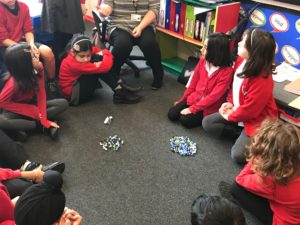
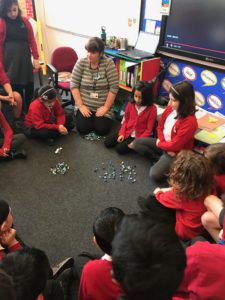
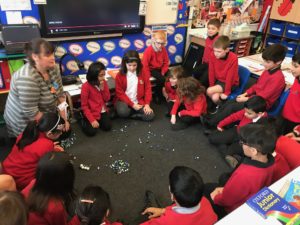
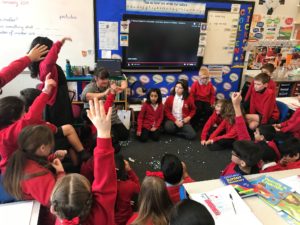
The children noted that particles in a
gas are well separated with no regular arrangement.
In a liquid, the particles are close together with no regular arrangement and in a solid are tightly packed, usually in a regular pattern. Solids have a fixed shape that is difficult to change. Then, we went on to sort items into groups. Ask your child what type of diagram we were using in the picture.
Then, we went on to sort items into groups. Ask your child what type of diagram we were using in the picture.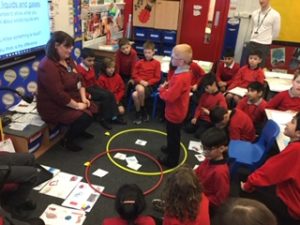
After grouping items into the 3 types of matter, the children began to ask questions and challenge some of their classification decisions.
“Water can be solid.” stated Sami.
“Can the shape of some solids be changed?” questioned Kashif.
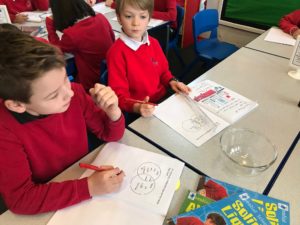
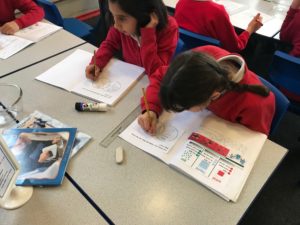
Throughout our lesson, the children were learning some new, scientific vocabulary. Can your child remember any?
Below, there are a few quiz questions for you to ask your children at home.
1, Which of these is not true of solids?
The shape of a liquid does not change
A liquid takes the shape of its container
Liquids are runny and can be poured
The volume of a liquid does not change